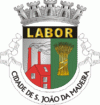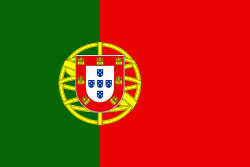São João da Madeira (São João da Madeira)
 |
 |
São João da Madeira stood out also recently by introducing in 2011 the Industrial Tourism in Portugal and, in 2012, becoming the first Portuguese municipality to offer almost integral wireless coverage in its municipal area.
The origins of São João da Madeira extend back to the consecutive settlements by Celt, Roman, Moors and Visigoths. Yet, historically the first mention of São João occurred in 1088: the first reference was the phrase Uilla de Sancto Ioanne de Mateira, that appeared in the sale of lands in the territory. The designation of "Madeira" that appeared was in reference to the abundance of trees and forest, that continued to exist in the region.
In the 19th century, São João da Madeira registered an intense growth, the fruit of commercial and industrial development linked to the manufacture of hats and dairy industry. J. Gomes de Pinho was the first empressario to establish a hat factory in 1802, but it was António José de Oliveira Júnior, an ex-functionary who would drive the local industry with his establishment in 1892 of the first fur hat factory. It would eventually become one of the major symbols of São João da Madeira's new economy, the Empresa Industrial de Chapelaria Lda. Totally mechanized by the early 19th century, it would become the largest factory in the Iberian Peninsula by the end of the 19th century. Oliveira Júnior was recognized by the national government, who issued him a diploma of Industrial and Agricultural Merit, its citizens later honouring him with a bust and the naming of one of its roads. The prosperity that developed, also supported by the nacscent growth of the footwear industry, allowed the growth of a dynamic centre that attracted more inhabitants with the possibility of work.
With progress and modernization there was a radical alteration in the architecture of the community. The primitive church was demolished in 1883, and the following year the new temple was blessed and inaugurated (11 July 1888).
In 1908 King Manuel II of Portugal inaugurated the Caminho de Ferro do Vale do Vouga (Vouga Valley Railline) which, along with the construction of new streets and roads allowed the parallel growth of the region. With the construction of the local hospital, the introduction of electricity into the region was finally concluded, while at the same time the cultural arena was enhanced with the establishment of the Grupo Patriótico Sanjoanense a philharmonic band and cultural centre (led by the Jesuit priest and histographer Serafim Leite).
It was not until 11 October 1926 that the region achieved both economic and political autonomy as a full municipality, a fact that was seen by locals as enviable due to its inferior status administratively (until then it was a civil parish of the neighbouring municipality of Oliveira de Azeméis). Its independence was recorded in the local newspaper O Regional as born "of a group of young people with blood that boiled in their veins and anxious for the constant progress of São João da Madeira". At that time, the Portuguese government considered São João da Madeira one of the most important regional industrial centres with its progress suffocated by its inferior status. São João da Madeira became a city at 28 June 1984, by the law n.º 13/84.
By the second World War, the felt industry grew in Portugal, and during the 1940s the production of fur and felt production was centralized in the factories of the municipality, with the establishment of the Cortadoria Nacional do Pêlo, which was nationalized in 1945. In 1946, 1775 people worked in the hat-making industrial in Portugal, while 1212 were located in São João da Madeira. The activity of this industry was later immortalized by João da Silva Correia, in his romance "Unhas Negras", a pejorative reference to the works who worked the open cauldrons that darken and destroyed their fingernails (unhas negras literally means "darken/blacken fingernails"). The term was later generally used to identify the citizenry of the municipality. The use of the word "Labor", on the coat-of-arms of the municipality, was intended to signify the importance of these workers in the development of the region. Regardless, the hat-making industries slowly declined in the following decades, with the decline in the use of hats, and the shoe-making industry grew in importance, resulting in its reference as the "Capital of Footwear" in Portugal (Capital do Calçado).
Map - São João da Madeira (São João da Madeira)
Map
Country - Portugal
 |
 |
| Flag of Portugal | |
One of the oldest countries in Europe, its territory has been continuously settled, invaded and fought over since prehistoric times. The territory was first inhabited by pre-Roman and Celtic peoples who had contact with Phoenicians, ancient Greeks and Carthaginians. It was later ruled by the Romans, followed by the invasions of Germanic peoples and the Islamic invasion by the Moors, whose rule was eventually expelled during the Reconquista. Founded first as a county of the Kingdom of León in 868, gained its independence as the Kingdom of Portugal with the Treaty of Zamora in 1143.
Currency / Language
| ISO | Currency | Symbol | Significant figures |
|---|---|---|---|
| EUR | Euro | € | 2 |
| ISO | Language |
|---|---|
| PT | Portuguese language |















